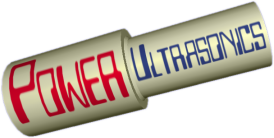Sir, I've some doubts regarding ultrasonics and their application to machining. Kindly clarify them.
1. I saw some ultrasonic machine tools specifying the range of frequency in which they operate. say--- 17 to 21 khz. In such case how can the transducer be tuned to operate at resonant condition over
entire range? Also as you answered to some query, is removing material here and there is the only method of tuning??
2. Generally amplitude is specified in terms of % of power like 40% or 50% power. Does it mean only that much % of rated power is being consumed?? Also can you please tell/refer to any relation(s) between input power and amplitude.
3. Sir, if you don't think otherwise, can you please elaborate the resonant condition of standing wave? I mean at the interface when the wave gets reflected back and forms a standing wave, I'm thinking it is getting exactly out of phase with incident wave. So won't this nullify the incident wave? I know I'm interpreting it wrongly
somewhere cos in practice it is not getting nullified but getting resonated.
